Your cart is currently empty!
Month: July 2024
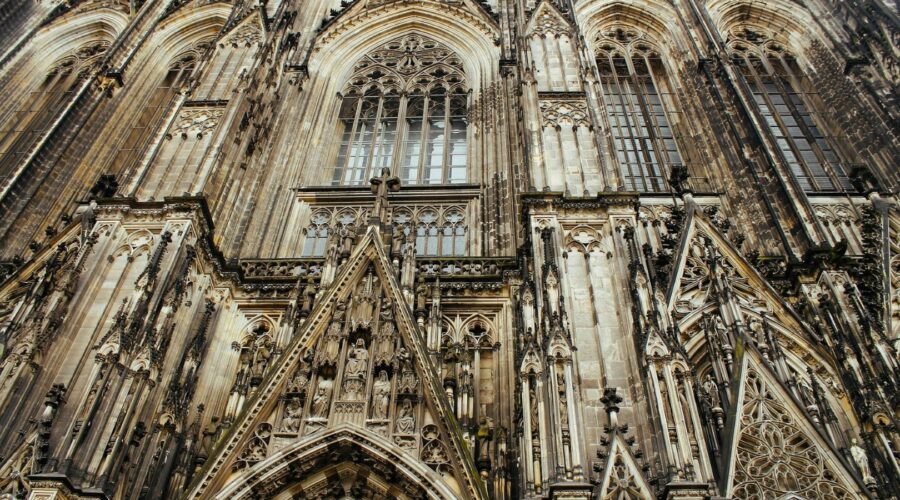
Discover the Rich History and Architectural Splendor of St. Matthew’s Church
Introduction
Nestled amidst the bustling streets of a quaint town, St. Matthew’s Church stands as a testament to the enduring power of faith and architectural brilliance. With its awe-inspiring medieval facade, captivating interior, and storied past, this sacred edifice has been a beacon of spiritual guidance and a source of inspiration for generations.
Historical Heritage
Medieval Origins
St. Matthew’s Church traces its roots to the 12th century when it was established as a modest chapel on the site of an ancient Roman settlement. Over the centuries, it underwent numerous expansions and renovations, shaping its architectural character into a blend of Romanesque, Gothic, and Renaissance elements.
Pilgrimage and Significance
During the Middle Ages, St. Matthew’s Church emerged as a popular pilgrimage destination for those seeking spiritual renewal and divine assistance. Devout pilgrims traveled from far and wide to venerate the relics of the titular saint, believed to have supernatural healing powers.
Architectural Marvel
Gothic Splendor
The most striking feature of St. Matthew’s Church is its Gothic facade, adorned with intricate carvings and soaring spires. The main entrance, framed by an elegant archway, invites visitors into the hallowed space within.
Stunning Nave
Step inside the church and be greeted by a breathtaking nave, its lofty vaulted ceiling supported by slender columns. The walls are adorned with colorful stained glass windows, casting a kaleidoscope of light upon the sacred space.
Chapels and Altars
Throughout the church, one finds a series of side chapels and altars dedicated to various saints and religious figures. Each chapel is a sanctuary of its own, offering a space for private contemplation and prayer.
Artwork and Treasures
Religious Masterpieces
St. Matthew’s Church is home to a remarkable collection of religious artwork. From the intricate iconography of ancient frescoes to the delicate brushstrokes of Renaissance paintings, these masterpieces evoke a sense of awe and devotion.
Sacred Relics
Among the church’s most prized possessions are sacred relics believed to belong to St. Matthew himself. These relics, kept in a secure reliquary, have drawn pilgrims and devotees for centuries.
Community and Outreach
Central to Local Life
St. Matthew’s Church is not merely a historical landmark but also a vibrant part of the local community. It plays a vital role in various outreach programs, providing support to the needy, fostering interfaith dialogue, and preserving the town’s cultural heritage.
Educational and Cultural Initiatives
The church also serves as a center for education and cultural events. It hosts lectures, workshops, and exhibitions, engaging the community in intellectual and artistic pursuits.
Visitor Information
Location and Hours
St. Matthew’s Church is conveniently located in the heart of the town. It is open to the public daily during specific hours for guided tours, self-guided exploration, and religious services.
Admission and Fees
Admission to the church is free of charge, although visitors are encouraged to consider making a donation to support its maintenance and outreach programs.
Accessibility
St. Matthew’s Church is wheelchair-accessible, ensuring that all visitors can fully experience its architectural beauty and spiritual significance.
Conclusion
St. Matthew’s Church stands as a testament to the enduring power of faith, architectural brilliance, and community spirit. Its storied past, captivating interior, and rich collection of artwork invite visitors to immerse themselves in a world of spirituality, history, and beauty. Whether you seek a meaningful religious experience, appreciate the wonders of medieval architecture, or simply connect with the heart of a historic town, St. Matthew’s Church is a destination that will surely leave a lasting impression.
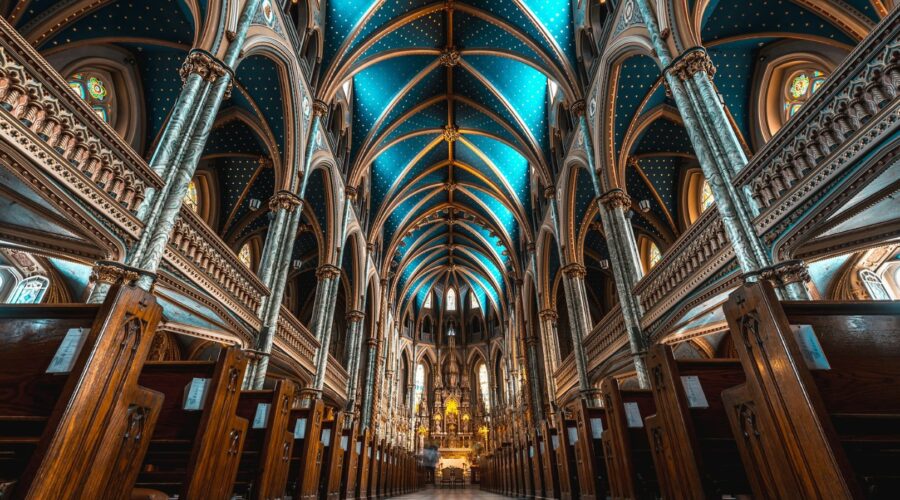
The Anglican Communion: A Guide to Its History, Beliefs, and Structure
Introduction
The Anglican Communion is a worldwide fellowship of churches that share a common history, doctrine, and liturgy. It is the third largest Christian communion in the world, with over 85 million members in 165 countries.
The Anglican Communion is often described as “both catholic and reformed.” This means that it retains many of the traditions and practices of the Roman Catholic Church, but it also has a strong emphasis on the authority of Scripture and the individual conscience.
History
The Anglican Communion traces its roots back to the Church of England, which was founded in the 16th century by King Henry VIII.
Henry VIII broke with the Roman Catholic Church in 1534 after the Pope refused to annul his marriage to Catherine of Aragon. Henry then declared himself the Supreme Head of the Church of England, and he began to make a number of changes to the church’s doctrine and liturgy.
After Henry VIII’s death in 1547, the Church of England went through a period of turmoil. However, it eventually emerged as a distinct and separate Christian communion.
In the 19th century, the Anglican Communion began to spread to other parts of the world. Missionaries from the Church of England established churches in North America, Africa, Asia, and Australia.
Today, the Anglican Communion is a global fellowship of churches. It is governed by the Lambeth Conference, which meets every ten years to discuss issues facing the communion.
Beliefs
The Anglican Communion is based on the following beliefs:
- The Bible is the supreme authority for matters of faith and practice.
- The Nicene Creed and the Apostles’ Creed are essential statements of Christian belief.
- The sacraments of baptism and Holy Communion are essential for salvation.
- The church is the body of Christ on earth.
- The Anglican Communion is a fellowship of churches that share a common history, doctrine, and liturgy.
Structure
The Anglican Communion is governed by the Lambeth Conference, which meets every ten years to discuss issues facing the communion. The Lambeth Conference is made up of bishops from all over the world.
The Archbishop of Canterbury is the spiritual leader of the Anglican Communion. He is the bishop of Canterbury Cathedral and the head of the Church of England.
The Anglican Communion is divided into provinces. Each province is led by an archbishop or a primate.
The Anglican Communion is a decentralized organization. Each province is autonomous and has its own governing body.
Challenges
The Anglican Communion faces a number of challenges, including:
- The rise of secularism
- The decline of church attendance
- Theological disagreements
- Cultural differences
Despite these challenges, the Anglican Communion remains a vibrant and growing Christian communion.
Conclusion
The Anglican Communion is a worldwide fellowship of churches that share a common history, doctrine, and liturgy. It is the third largest Christian communion in the world, with over 85 million members in 165 countries.
The Anglican Communion is based on the belief that the Bible is the supreme authority for matters of faith and practice. It also believes that the sacraments of baptism and Holy Communion are essential for salvation.
The Anglican Communion is governed by the Lambeth Conference, which meets every ten years to discuss issues facing the communion. The Archbishop of Canterbury is the spiritual leader of the Anglican Communion.
The Anglican Communion faces a number of challenges, including the rise of secularism, the decline of church attendance, and theological disagreements. However, it remains a vibrant and growing Christian communion.
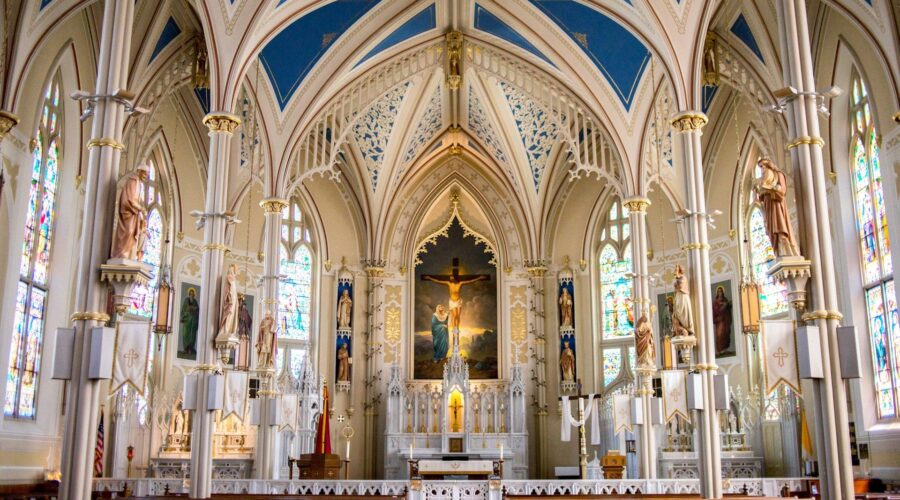
Discover the Enchanting History and Inspiring Legacy of St. Bernadette Church
A Majestic Sanctuary in the Heart of Lourdes
Nestled amidst the picturesque foothills of the Pyrenees in Lourdes, France, St. Bernadette Church stands as a testament to faith, healing, and spiritual transformation. Originally constructed as a chapel in 1866, the church was consecrated in 1871 and underwent significant expansion in the following decades. Today, St. Bernadette Church is one of the most iconic religious landmarks in the world, welcoming millions of pilgrims each year.

The Miraculous Apparitions
The history of St. Bernadette Church is inextricably intertwined with the remarkable apparitions experienced by St. Bernadette Soubirous in 1858. A young peasant girl, Bernadette witnessed 18 visions of a beautiful lady who identified herself as the Immaculate Conception. These apparitions culminated in a miraculous spring emerging from the ground, which has since become a symbol of healing and hope for millions.
A Shrine for the Sick and a Place of Pilgrimage
In the decades following the apparitions, Lourdes became a renowned destination for pilgrims seeking spiritual solace and physical healing. The waters of the spring are believed to possess miraculous properties, and countless individuals have reported miraculous cures after bathing in or drinking the water. St. Bernadette Church serves as a sanctuary for the sick, offering them a place for prayer, reflection, and hope.
Architectural Splendor and Artistic Treasures
St. Bernadette Church is an architectural masterpiece that reflects the grandeur of its purpose. The church features a Neo-Gothic design with towering spires, intricate stained-glass windows, and opulent marble interiors. It houses numerous artistic treasures, including statues, paintings, and mosaics that depict scenes from the life of St. Bernadette and the history of Lourdes.
Guided Tours and Spiritual Programs
Visitors to St. Bernadette Church can embark on guided tours that provide insights into the history, architecture, and significance of this sacred site. The church also offers a range of spiritual programs, including Masses, prayer services, and adoration of the Blessed Sacrament.
Conclusion
St. Bernadette Church is more than just a religious building; it is a living testament to the power of faith, hope, and the miraculous. Whether you are a pilgrim seeking spiritual renewal, a history buff, or simply an admirer of beautiful architecture, a visit to this iconic sanctuary is an unforgettable experience that will leave a lasting impression.
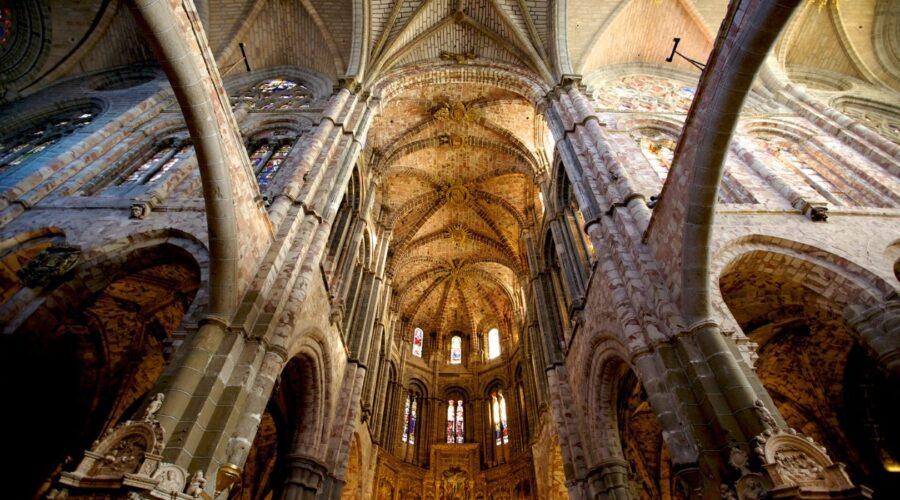
St Philips Church: A Majestic Beacon of Faith and History
A Glimpse into its Rich Past
Nestled in the heart of Birmingham, St Philip’s Church stands as a testament to the city’s vibrant religious heritage. Its story begins in 1715, when the need arose for a new place of worship in the rapidly expanding town. The initial church, built on the site of the present structure, served the community for over a century until its replacement in 1805.
The current church, designed by the renowned architect Robert Smirke, was consecrated in 1815. Its majestic neoclassical facade, adorned with elegant columns and a grand pediment, reflects the architectural sensibilities of the era. The interior of the church is equally impressive, with its high vaulted ceilings, intricate carvings, and beautiful stained-glass windows.
A Place of Worship and Community
Throughout its existence, St Philip’s Church has been a central hub for religious observation and community engagement. It has witnessed countless baptisms, marriages, and funerals, serving as a spiritual anchor for generations of Birmingham residents.
Beyond its religious significance, St Philip’s Church has played a significant role in the city’s cultural and social life. It has hosted concerts, exhibitions, and public lectures, fostering a sense of community pride and cultural richness.
Architectural Splendor
St Philip’s Church is not only a sacred space but also an architectural masterpiece. Its neoclassical design incorporates elements of Greek and Roman architecture, creating a harmonious and imposing structure.
Key Architectural Features:
- Neoclassical facade with Corinthian columns and pediment
- Grand entrance portico with arched doorway
- High vaulted ceilings supported by slender columns
- Intricate carvings and moldings throughout the interior
- Beautiful stained-glass windows depicting biblical scenes
Civic and Historical Significance
St Philip’s Church is inextricably linked to the development of Birmingham. It stands as a witness to the city’s industrial growth and social transformation. The church has been recognized for its architectural and historical importance, earning Grade I listed status in 1950.
Its location in the city center makes it a prominent landmark, visible from afar. Its steeple, soaring above the surrounding buildings, has served as a beacon for travelers and a symbol of religious faith for centuries.
Restoration and Preservation
St Philip’s Church has undergone several restoration projects over the years to maintain its structural integrity and architectural beauty. In the early 20th century, major repairs were carried out to address the damage caused by industrial pollution.
In recent years, a comprehensive restoration program has been undertaken to safeguard the church’s long-term future. This includes meticulous cleaning and repair of the exterior and interior, as well as the restoration of the stained-glass windows.
Visiting St Philip’s Church
St Philip’s Church is open to the public for worship and visitation. Visitors can admire its architectural grandeur, explore its rich history, and experience the vibrant community that calls it home.
Visiting Hours:
- Monday to Saturday: 10:00 am – 4:00 pm
- Sunday: 12:00 pm – 4:00 pm
Guided tours of the church are available by appointment. To schedule a tour, please contact the church office at (0121) 236 5498 or visit their website at www.stphilipschurchbirmingham.org.
Conclusion
St Philip’s Church is a magnificent edifice that stands as a testament to the enduring power of faith and the resilience of a city. Its architectural beauty, historical significance, and vibrant community make it a true gem in the heart of Birmingham.
Whether you are seeking spiritual solace, admiring architectural grandeur, or exploring the rich history of the city, St Philip’s Church offers an unforgettable experience. Its doors are open to all who seek inspiration and a connection to the past.
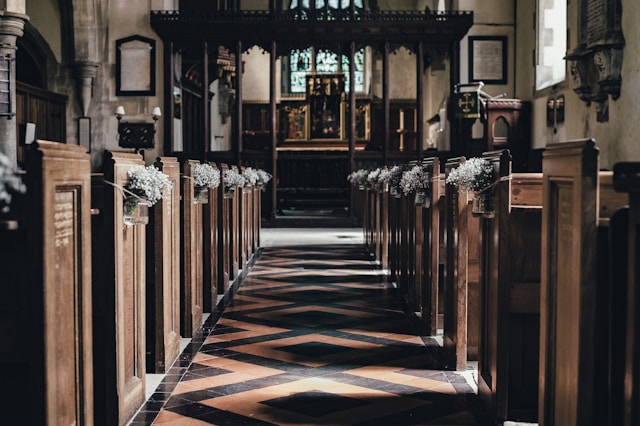
Unveiling the Athanasian Creed: A Comprehensive Guide
Introduction
The Athanasian Creed, also known as the Quicunque Vult, is a theological statement that outlines the central beliefs of Christianity regarding the nature of God, Jesus Christ, and the Holy Spirit. Its origins are shrouded in mystery, but it has been attributed to various Church Fathers and theologians throughout history. This detailed blog post will delve into the depths of the Athanasian Creed, exploring its history, key doctrines, and significance within the Christian faith.
History and Origins
The precise origins of the Athanasian Creed remain a subject of debate. Some scholars believe it was composed in the 5th century by St. Athanasius, the renowned Bishop of Alexandria, who played a pivotal role in defending orthodox Christian doctrine against Arianism. Others attribute its authorship to Hilary of Arles, Vincent of Lerins, or even a later unknown writer.
Regardless of its specific origin, the Athanasian Creed gained widespread acceptance in Western Christianity by the 8th century. It was officially included in the Book of Common Prayer of the Anglican Church in the 16th century and has since become an integral part of the liturgical practices of various Christian denominations, including the Roman Catholic Church, Lutheran Church, and Methodist Church.
Key Doctrines
The Athanasian Creed consists of three main sections, each expounding on essential doctrines of the Christian faith:
On the Trinity
- Affirms the unity of God in three distinct Persons: the Father, the Son (Jesus Christ), and the Holy Spirit.
- States that each Person of the Trinity is eternal, uncreated, and fully divine.
- Emphasizes the equality and unity of the three Persons, denying any subordination or hierarchy.
On the Incarnation
- Declares that Jesus Christ is both fully God and fully human.
- Explains that his divine and human natures are united in one Person, without confusion or division.
- Confirms the virgin birth of Jesus, his crucifixion, death, and resurrection.
On Salvation
- Asserts that salvation is only possible through faith in Jesus Christ.
- States that those who believe in the Trinity and the Incarnation will be saved, while those who deny these doctrines will be condemned.
- Emphasizes the importance of good works and obedience to God’s commandments.
Significance and Use
The Athanasian Creed serves several important purposes within the Christian faith:
Summary of Christian Doctrine
It provides a concise and comprehensive summary of the core beliefs of Christianity, serving as a touchstone for orthodox doctrine.
Liturgical Use
The creed is recited or sung in many Christian churches during specific liturgical services, such as on Trinity Sunday or during Holy Week.
Catechism and Instruction
It is used as a teaching tool for catechumens and new believers, helping them understand the fundamental truths of the faith.
Defense Against Heresy
The Athanasian Creed has historically been used to defend against various heresies, including Arianism, Nestorianism, and Monophysitism, which sought to undermine the orthodox understanding of God and Jesus Christ.
Controversies and Interpretations
Despite its widespread acceptance, the Athanasian Creed has not been without controversy throughout history:
The “Damnatory Clauses”
The creed contains two clauses that condemn those who do not believe in the Trinity and the Incarnation to everlasting fire. These clauses have been criticized by some as harsh and exclusive.
Anti-Arian Polemic
The creed’s strong emphasis on the divinity of Jesus Christ and its condemnation of Arianism have led some to view it as overly polemical and divisive.
Liturgical Use and Interpretation
The use of the Athanasian Creed in certain liturgical contexts has been questioned by some Christian denominations, who argue that its complex language and theological subtleties may not be accessible to all.
Conclusion
The Athanasian Creed stands as a testament to the rich theological heritage of Christianity. Its exposition of the doctrines of the Trinity, the Incarnation, and salvation has shaped the faith and understanding of believers for centuries. While it has faced controversies and differing interpretations, the creed remains a valuable resource for those seeking to understand the core tenets of the Christian faith.
Whether recited in liturgy or studied in catechism, the Athanasian Creed continues to serve as a guide to the fundamental truths that unite Christians across time and denominations.
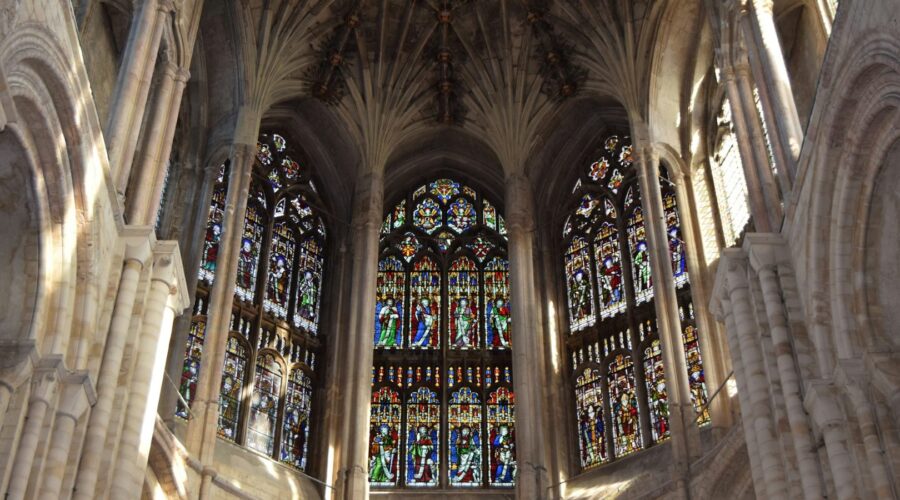
Unveiling the Sacred History: A Comprehensive Guide to Our Lady of Grace Church
1. Historical Tapestry
Nestled amidst the vibrant streets of Hoboken, New Jersey, Our Lady of Grace Church stands as a beacon of faith and a testament to the power of resilience. Its history, spanning over a century, is a captivating tale intertwined with the lives of countless individuals.
1.1. Origins and Founding
In the late 19th century, Hoboken experienced a surge of Italian immigrants. Seeking a place of worship that embraced their cultural heritage, they established Our Lady of Grace parish in 1888. The church’s first pastor, Father Angelo Vitiello, played a pivotal role in shaping its early identity.
1.2. Construction and Expansion
In 1904, the groundbreaking for the current church building took place. Designed by renowned architect Michael J. Garvin, the Romanesque Revival-style structure features intricate stained-glass windows, soaring arches, and a majestic pipe organ. Over the years, the church has undergone several renovations and expansions to accommodate its growing congregation.
2. Architectural Splendor
Our Lady of Grace Church is not only a place of worship but also an architectural masterpiece. Its captivating exterior showcases a harmonious blend of stone, brick, and terra-cotta.
2.1. Exterior
The church’s facade is adorned with intricate carvings and sculptures. The main entrance is flanked by two bell towers that reach skyward, symbolizing the church’s connection to the heavens.
2.2. Interior
Inside, the church’s grandeur is unveiled. The nave features majestic columns that support the vaulted ceiling. The sanctuary is a breathtaking sight, with its intricately painted dome and vibrant stained-glass windows depicting biblical scenes.
3. Community Cornerstone
Our Lady of Grace Church is deeply rooted in the Hoboken community. It serves as a spiritual sanctuary, a hub for social events, and a provider of social services.
3.1. Pastoral Ministries
The church offers a wide range of pastoral ministries, including regular Masses, confession, and spiritual guidance. It also provides support for youth, families, and the elderly.
3.2. Community Programs
Our Lady of Grace Church hosts a variety of community programs, such as a food pantry, a homeless shelter, and a soup kitchen. It also offers educational programs and English classes for immigrants.
3.3. Social Events
The church is a central location for social events, including festivals, dinners, and dances. These gatherings foster a sense of belonging and unity among parishioners.
4. Legacy and Impact
Our Lady of Grace Church has played a significant role in shaping the cultural and spiritual landscape of Hoboken. Its history is a testament to the enduring power of faith and the transformative impact it has had on generations of worshippers.
4.1. Historical Preservation
The church has been designated as a historic landmark by the Hoboken Historical Preservation Commission. This recognition ensures its preservation for future generations.
4.2. Ongoing Vitality
Our Lady of Grace Church continues to thrive as a vibrant and active parish. It remains a beacon of faith, hope, and community for residents of Hoboken and beyond.
5. Practical Information
For those interested in visiting or attending services at Our Lady of Grace Church, here are some practical details:
- Address: 400 Willow Avenue, Hoboken, NJ 07030
- Phone: (201) 659-0545
- Website: https://www.olghoboken.org/
5.1. Mass Times
Mass times vary throughout the week. Please visit the church’s website for the most up-to-date schedule.
5.2. Tours
Guided tours of the church are available by appointment. Please contact the parish office to schedule a tour.
6. Conclusion
Our Lady of Grace Church is a cherished landmark and a vibrant spiritual community in the heart of Hoboken, New Jersey. Its history, architecture, and community outreach are testaments to its enduring significance. Whether you are a longtime parishioner or a first-time visitor, Our Lady of Grace welcomes you with open arms.
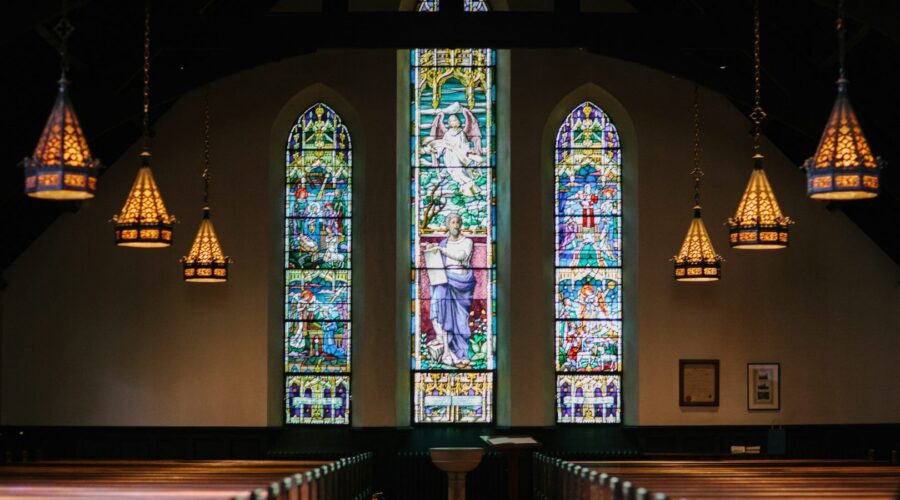
Discover St. John Neumann Catholic Church: A Haven for Faith and Community
About St. John Neumann Catholic Church
St. John Neumann Catholic Church is a vibrant and welcoming parish in the heart of St. Louis, Missouri. Named after the beloved American bishop and saint, our church has been a spiritual beacon for countless generations since its establishment in 1901.
As a community of faith, we are committed to fostering a deep connection with God and our neighbors. Our mission is to provide a welcoming environment where all are encouraged to grow in their faith, serve others, and experience the fullness of Catholic life.
Our Services
At St. John Neumann, we offer a wide range of services to meet the spiritual needs of our parishioners:
Mass Times:
- Weekdays: 8:00 AM, 12:05 PM (Monday-Thursday)
- Saturdays: 5:00 PM (Vigil)
- Sundays: 7:30 AM, 9:00 AM, 10:30 AM, 12:00 PM
Sacraments:
- Baptism
- Confession
- Confirmation
- Eucharist
- Marriage
- Anointing of the Sick
Other Services:
- Bible studies
- Prayer groups
- Retreats
- Youth ministry
- Senior adult fellowship
Our Community
Our parish is not just a building but a thriving community of believers who come together to worship, serve, and grow together. We offer numerous opportunities for our parishioners to connect with each other:
Parish Organizations:
- Knights of Columbus
- Ladies Auxiliary
- St. Vincent de Paul Society
- Altar Society
- Choir
Events and Activities:
- Parish picnics
- Fall festivals
- Lenten fish frys
- Community outreach programs
- Youth group trips
Education and Spirituality
At St. John Neumann, we believe that faith and education are inseparable. We offer a comprehensive program of religious education for all ages:
Children’s Program:
Our children’s program provides a solid foundation in Catholic beliefs and values. Children learn about the Bible, sacraments, and the life of Christ.
Youth Ministry:
Our youth ministry program engages teenagers in their faith journey through retreats, service projects, and social events.
Adult Education:
We offer a variety of adult education opportunities, including scripture studies, theology classes, and book clubs.
Contact Us
To learn more about St. John Neumann Catholic Church, please visit our website at www.stjohnneumannstl.org or contact us at:
Address: 15105 South Sappington Road, St. Louis, MO 63136
Phone: (314) 843-9793
Email: [email protected]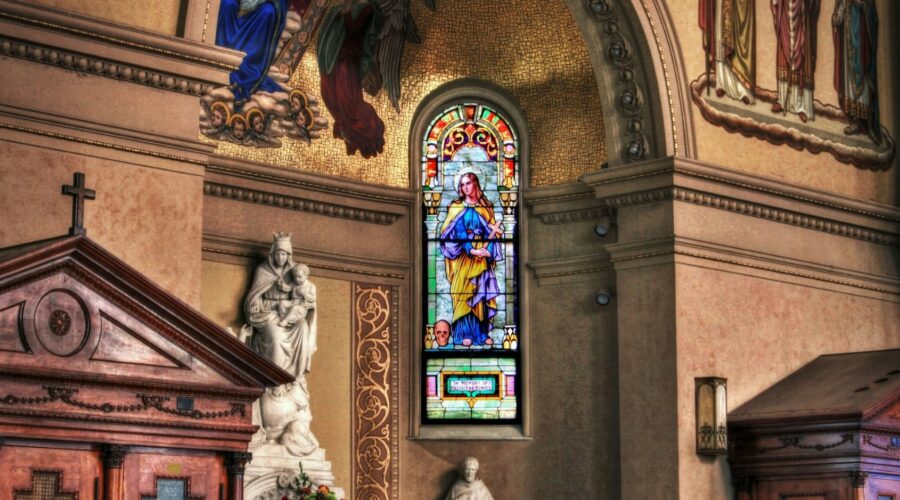
Explore the Splendid Beauty and Historical Significance of St. Lawrence Church
A Journey Through Time: The Evolution of St. Lawrence Church
Embark on a historical expedition as we delve into the remarkable journey of St. Lawrence Church. Built in the heart of London’s vibrant East End, this iconic edifice has witnessed centuries of transformative evolution:
- 12th Century: The humble beginnings of St. Lawrence Church as a small chapel dedicated to the patron saint of travelers, St. Lawrence of Rome.
- 14th Century: Significant expansion and renovation resulted in a cruciform plan with a central tower and a nave that is one of the largest in London.
- 16th Century: The Reformation and its aftermath left an indelible mark on the church, with its interior stripped of much of its medieval embellishments.
- 19th Century: The Victorian era brought about a revival of interest in Gothic Revival architecture, leading to a meticulous restoration that returned the church to its former glory.
- 20th Century: Bombing during the Second World War caused extensive damage to the south transept and the nave, which were later meticulously rebuilt.
Architectural Grandeur: Exploring St. Lawrence Church’s Features
St. Lawrence Church is a captivating blend of architectural styles, a testament to its rich history and the evolving tastes of its builders. Prominent features include:
Nave and Aisles
The vast nave, flanked by spacious aisles, creates a sense of awe-inspiring grandeur. The soaring arcades that separate the nave from the aisles are supported by massive pillars.
Tower
The central tower, a prominent landmark of the East End skyline, adds an imposing vertical element to the church’s silhouette. Its graceful arches and intricate carvings showcase the craftsmanship of medieval builders.
Transepts
The transepts, extending from the nave at the crossing, provide additional space and light to the church. The north transept features exquisite stained glass windows, while the south transept houses the Lady Chapel.
Lady Chapel
The Lady Chapel, located in the south transept, is a serene and atmospheric space dedicated to the Virgin Mary. Its elegant vaulted ceiling and ornate altar add to its beauty.
St. Lawrence Church: A Cultural and Community Hub
Beyond its architectural significance, St. Lawrence Church is a vibrant center for the local community. It plays a pivotal role in fostering a sense of belonging and offering a range of activities and services.
Community Events and Activities
The church hosts a wide variety of community events throughout the year, such as concerts, exhibitions, and lectures. These events provide opportunities for people to come together, share experiences, and build social connections.
Social Services and Support
St. Lawrence Church is actively involved in providing social services to those in need. It operates a food bank, offers counseling services, and provides support to the homeless and vulnerable members of the community.
Historic Tower Tours
Visitors can embark on guided tours of the church’s historic tower, where they can learn about the fascinating history of the building and enjoy panoramic views of the surrounding area.
Visiting St. Lawrence Church: Practical Information
Planning a visit to St. Lawrence Church? Here are some helpful details:
Location and Accessibility
St. Lawrence Church is conveniently located in the heart of London’s East End, at St. Lawrence Jewry, Gresham Street, London EC2V 8AS.
Opening Hours
The church is open daily, with specific hours for services and other activities. Visitors are welcome to explore the church during opening hours.
Accessibility
St. Lawrence Church is fully accessible, with wheelchair ramps and accessible toilets available.
Admission
Entry to the church is free of charge, although donations are welcome to support its upkeep and community activities.
Guided Tours
Guided tours of the church’s historic tower are available for a small fee. Advanced booking is recommended.
Conclusion
St. Lawrence Church stands as a testament to London’s rich architectural heritage and the enduring spirit of its community. Its blend of historical charm, architectural grandeur, and ongoing relevance makes it a must-visit destination for visitors and locals alike. Whether you seek a glimpse of the past, a moment of spiritual reflection, or simply a welcoming community space, St. Lawrence Church offers a profound and memorable experience.
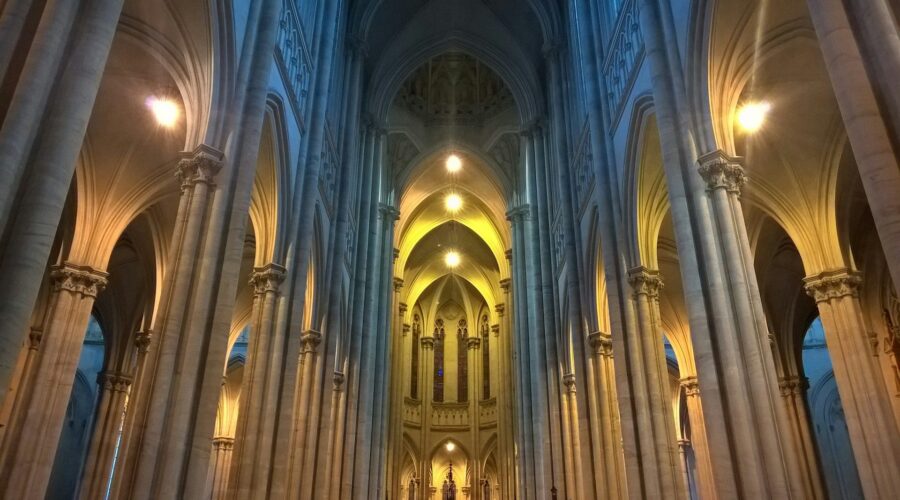
Saint Mary Magdalene: The Devoted Disciple and Anointed
Introduction
Saint Mary Magdalene, a prominent figure in the New Testament, held deep devotion to Jesus Christ. Her presence is mentioned in numerous biblical accounts, illuminating her unwavering faith and extraordinary experiences. This comprehensive guide delves into the life, legacy, and enduring impact of Saint Mary Magdalene, providing a comprehensive understanding of her significant role in Christian history.
Life and Ministry
Mary Magdalene’s origins are shrouded in mystery, but she is commonly believed to have originated from Magdala, a town on the Sea of Galilee. She encounters with Jesus transformed her life, leading to her liberation from seven demons (Luke 8:2). Mary Magdalene became an ardent follower, accompanying Jesus during his ministry and witnessing his miracles firsthand (Mark 15:40-41).
Devotion to Jesus
Mary Magdalene’s dedication to Jesus was unwavering. She expressed her profound gratitude by washing his feet with her tears and anointing them with precious oil (Luke 7:36-38). This act symbolizes her deep humility and remorse.
Witness to the Crucifixion and Resurrection
Mary Magdalene remained steadfast during Jesus’ crucifixion, standing at the foot of the cross with other devoted women (John 19:25). Her unwavering presence demonstrates her unwavering loyalty. Moreover, she was among the first to witness Jesus’ resurrection, encountering him in the garden and recognizing his voice (John 20:11-18). Mary Magdalene’s testimony of the resurrection became a cornerstone of Christian belief.
Post-Resurrection Life and Legacy
Following Jesus’ ascension, Mary Magdalene continued to spread the message of Christianity. Tradition holds that she traveled to Ephesus, where she preached and established a community of believers.
Influence on Christian Thought
Mary Magdalene’s role in the early Christian church was significant, as she was one of the first witnesses to Jesus’ resurrection. Her testimony played a crucial part in shaping the understanding of Jesus’ divinity and the hope of resurrection for all believers.
Devotion and Veneration
Over the centuries, Mary Magdalene has been revered as a saint by both the Catholic and Orthodox churches. Her feast day is celebrated on July 22nd, and she is recognized as the patron saint of repentant sinners, perfume makers, and pharmacists.
Controversies and Misinterpretations
Throughout history, Mary Magdalene has been the subject of various controversies and misinterpretations. These include:
-
The “Penitent Prostitute” Theory
Some early Christian writings portrayed Mary Magdalene as a former prostitute who repented and became a follower of Jesus. However, there is no biblical evidence to support this claim, and modern scholarship generally rejects it.
-
Conflation with Mary of Bethany
In some medieval traditions, Mary Magdalene was conflated with Mary of Bethany, the sister of Lazarus. However, biblical accounts clearly distinguish between the two women.
-
The Gnostic Gospel of Mary Magdalene
A controversial text known as the “Gospel of Mary Magdalene” claims to contain teachings attributed to Mary Magdalene. However, this text is not considered part of the biblical canon and its authenticity is widely disputed.
Biblical Accounts
The following table summarizes the key biblical passages related to Saint Mary Magdalene:
| **Passage** | **Event** |
|—|—|
| Luke 8:2 | Jesus casts out seven demons from Mary Magdalene |
| Mark 15:40-41 | Mary Magdalene witnesses Jesus’ crucifixion |
| John 19:25 | Mary Magdalene stands at the foot of the cross |
| John 20:11-18 | Mary Magdalene witnesses Jesus’ resurrection and is entrusted to proclaim the news to the disciples |Conclusion
Saint Mary Magdalene’s life and ministry exemplify unwavering devotion to Jesus Christ. Her presence in the biblical accounts and her enduring legacy as a saint and revered figure in Christian tradition showcase her profound impact on the faith. By understanding her story and contributions, we gain a deeper appreciation for the diversity and richness of the early Christian movement.
-
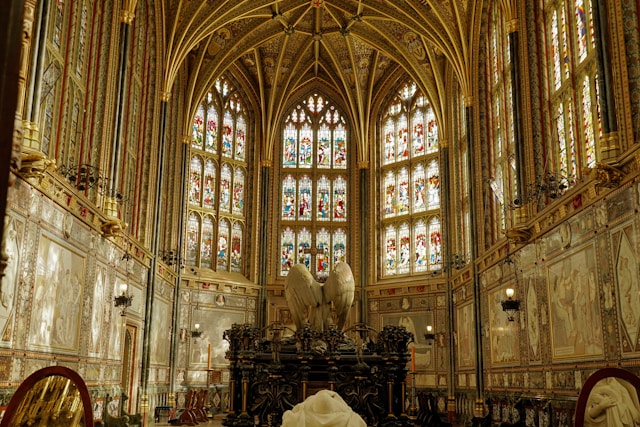
Hans Küng: A Pioneering Theologian and Ecumenical Leader
Hans Küng was a Swiss Catholic priest, theologian, and author who played a prominent role in the Catholic Church and the ecumenical movement. Throughout his career, he challenged traditional Church doctrines and advocated for reform, earning him both praise and controversy.
Early Life and Education
Born in 1928 in Sursee, Switzerland, Küng was ordained a priest in 1954. He pursued his studies at the University of Münster, Germany, earning a doctorate in theology in 1960.
Theological Controversies
Küng gained international attention in the 1960s and 1970s with his controversial writings that challenged traditional Church teachings on various topics.
- Infallibility of the Pope:
Küng argued that the pope is not infallible, and that his teachings can be mistaken.
- Celibacy of the Clergy:
He advocated for the ordination of married men as priests, arguing that celibacy is not a requirement of scripture.
- Contraception:
Küng believed that responsible use of contraception was morally acceptable, despite the Church’s prohibition.
- Female Ordination:
He supported the ordination of women as priests, arguing that it would reflect the Church’s fundamental commitment to equality.
Ecumenical Efforts
In addition to his theological writings, Küng was a tireless advocate for ecumenism, the movement towards Christian unity. He established the Hans Küng Global Ethic Forum in 1990, which promotes interfaith dialogue and a universal ethical framework.
Küng played a key role in the ecumenical movement, participating in the Second Vatican Council (1962-1965) and serving as a member of the Pontifical Council for Promoting Christian Unity.
Other Contributions
Beyond his theological and ecumenical work, Küng also made significant contributions to other fields.
- Nuclear Disarmament:
He actively campaigned for nuclear disarmament and was a strong critic of nuclear weapons.
- Human Rights:
Küng was a vocal advocate for human rights and social justice, working with various organizations to promote human dignity.
- Scholarly Research:
He authored numerous books and articles, making significant contributions to the fields of theology, philosophy, and ethics.
Recognition and Legacy
Küng’s work has been recognized worldwide, earning him numerous awards and accolades.
Despite facing criticism and opposition from some within the Catholic Church, Küng’s legacy as a pioneering theologian and ecumenical leader remains. His writings and efforts continue to inspire and challenge the Church and the broader Christian community today.
Awards Year Templeton Prize 1980 Erasmus Prize 1982 Peace Prize of the German Book Trade 1987 Sonning Prize 1996 - In 2009, the University of Notre Dame awarded Küng the Notre Dame Award for Distinguished Contribution to Church History.
- In 2013, he received the honorary degree of Doctor of Humane Letters from Harvard University.
Conclusion
Hans Küng was a visionary theologian and ecumenical leader who dedicated his life to challenging traditional doctrines, promoting interfaith dialogue, and advocating for peace and justice. His legacy continues to inspire and challenge the Christian community today, contributing to a more inclusive and progressive Church.
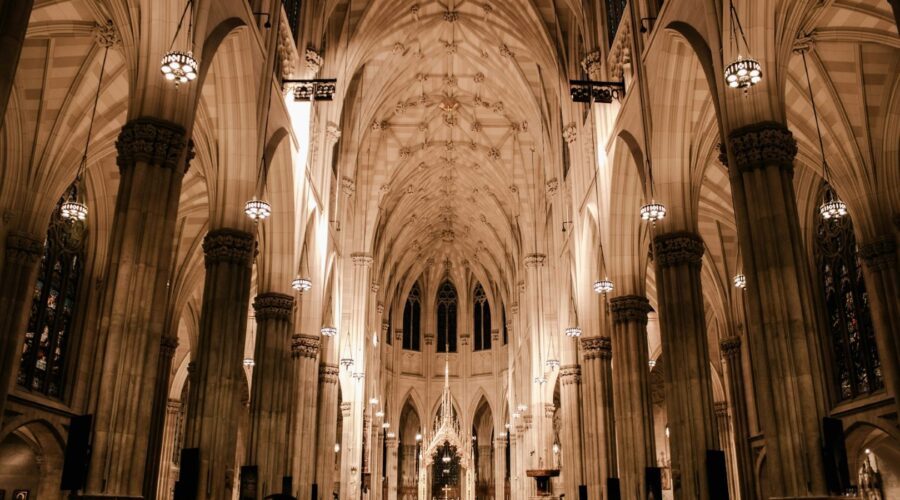
Discover the Influential Leaders of Saddleback Church: A Comprehensive Guide
Saddleback Church, renowned for its biblical teachings and innovative ministries, has been led by a team of dedicated pastors over the years. Here’s a detailed guide to the key pastors who have shaped Saddleback’s mission and vision:
Rick Warren
Lead Pastor & Founding Pastor
Rick Warren is the founding pastor of Saddleback Church, which he established in 1980 with his wife Kay. Under his leadership, Saddleback has grown into one of the largest and most influential churches in the world. Warren is a respected author, speaker, and theologian whose books, including “The Purpose Driven Life,” have sold millions of copies and been translated into multiple languages.
Kay Warren
Co-Founding Pastor & Author
Kay Warren is the co-founding pastor of Saddleback Church alongside her husband, Rick. She is a passionate advocate for women’s issues and has authored several books on marriage, relationships, and personal growth. Warren’s unwavering faith and commitment to serving others have made her a beloved figure within the Saddleback community.
Craig Groeschel
Senior Pastor
Craig Groeschel joined Saddleback Church as a teaching pastor in 2006 and became senior pastor in 2008. Under his leadership, Saddleback has launched several new campuses, expanded its online ministry, and strengthened its focus on spiritual growth and discipleship. Groeschel is known for his dynamic preaching and his emphasis on practical application of biblical principles.
Andy Wood
Executive Pastor
Andy Wood has served as the executive pastor of Saddleback Church since 2007. He oversees the day-to-day operations of the church, including its staff, finances, and facilities. Wood’s organizational skills and ability to lead large teams have been instrumental in Saddleback’s continued growth and success.
Lanny Donoho
Teaching Pastor
Lanny Donoho is a teaching pastor at Saddleback Church and the author of several books, including “The Power of a Whisper.” His sermons are known for their depth, practical insights, and emphasis on living a life of grace and forgiveness. Donoho’s passion for teaching the Bible has inspired countless lives.
Additional Key Pastors
- Tom Holladay: Senior Teaching Pastor
- Mark Driscoll: Former Lead Pastor (2011-2014)
- Anthony Evans: Teaching Pastor
- Charlie Sweeting: Teaching Pastor
- Dave Stone: Teaching Pastor
Leadership Structure at Saddleback Church
Saddleback Church operates under a leadership structure that combines a strong central authority with distributed responsibilities. The lead pastor serves as the overall shepherd of the church, while the senior pastors, teaching pastors, and executive pastor have specific roles and oversight within their respective areas.
The church’s leadership team meets regularly to make strategic decisions, set priorities, and ensure that Saddleback remains true to its mission and values. This collaborative approach has allowed Saddleback to respond effectively to the changing needs of its congregation and community.
Conclusion
The pastors of Saddleback Church have played a pivotal role in shaping the church’s legacy of faith, service, and community impact. Their passion for God, commitment to biblical teaching, and willingness to embrace innovation have made Saddleback a beacon of hope for millions worldwide.
As Saddleback continues its mission of “building great churches,” the dedicated leadership team will undoubtedly continue to inspire and guide the congregation towards spiritual growth, transformation, and a life lived to the fullest.
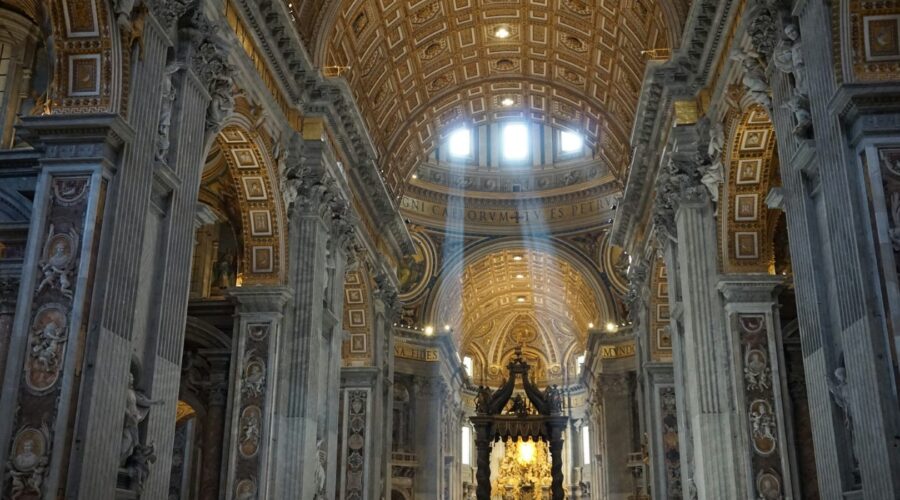
Religious Denomination: A Comprehensive Guide to Understanding Different Faith Traditions
What is a Religious Denomination?
A religious denomination is a distinct and organized branch of a religion that shares a common set of beliefs, practices, and traditions. Denominations may arise from differences in interpretations of religious texts, differing views on doctrine or practice, or historical splits within a religious community.
Denominations often establish their own organizational structures, leadership, and governance systems. They may have their own governing bodies, clergy, and places of worship.
Factors Influencing Denominational Formation
The formation of denominations can be influenced by various factors, including:
- Theological differences: Disagreements over religious beliefs, doctrines, and interpretations of scripture.
- Cultural and historical factors: Differences in cultural context, geographical location, and historical events.
- Leadership and authority: Disputes over leadership roles, authority, and decision-making processes.
- Social and political issues: Disagreements over the role of religion in society, political issues, or ethical concerns.
Types of Religious Denominations
There are a wide variety of religious denominations within major world religions, including:
Christianity
- Catholicism
- Orthodox Christianity
- Protestantism
- Anglican Communion
- Baptist
- Methodist
- Presbyterian
Islam
- Sunni
- Shia
- Sufism
Judaism
- Orthodox Judaism
- Conservative Judaism
- Reform Judaism
Buddhism
- Theravada Buddhism
- Mahayana Buddhism
- Vajrayana Buddhism
Hinduism
- Vaishnavism
- Shaivism
- Shaktism
Importance of Religious Denominations
Religious denominations play several important roles in society:
- Preserving and interpreting religious traditions: Denominations help maintain and pass down religious beliefs, practices, and rituals.
- Providing spiritual and moral guidance: Denominations offer spiritual guidance, support, and ethical guidelines to their members.
- Facilitating religious practices: Denominations provide places of worship, organize religious services, and facilitate religious rituals.
- Promoting social and community engagement: Denominations often engage in social welfare, outreach programs, and community activities.
- Fostering interfaith dialogue: Denominations can participate in interfaith dialogue and promote understanding among different religious traditions.
Challenges Faced by Religious Denominations
Religious denominations may face various challenges, such as:
- Internal conflicts and divisions: Disagreements over doctrine, leadership, or social issues can lead to internal conflicts and schisms.
- Secularization and religious decline: Declining religious affiliation and secularization can pose challenges to the growth and influence of denominations.
- Balancing tradition and modernization: Denominations may face the challenge of balancing traditional beliefs and practices with the evolving needs and perspectives of modern society.
- Interfaith friction and persecution: Denominations may encounter tension or persecution from other religious groups or secular authorities.
- Financial and organizational challenges: Denominations may face financial and organizational challenges, such as sustaining their institutions and supporting their clergy.
Conclusion
Religious denominations are distinct branches of religion that share common beliefs, practices, and traditions. They play a significant role in preserving and interpreting religious traditions, providing spiritual guidance, facilitating religious practices, and promoting social engagement. Denominations also face challenges related to internal conflicts, secularization, balancing tradition and modernization, and interfaith dynamics.
Understanding the nature and role of religious denominations is essential for appreciating the diversity and complexity of religious beliefs and practices in the world.